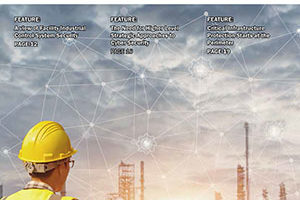How science can help build a more resilient Europe
Enhanced data collection, more knowledge sharing and a long-term approach to risk will be key in strengthening Europe’s resilience against future disasters, according to a new book published today by the JRC.
Drawing lessons from the coronavirus pandemic and other crises, ‘Science for Disaster Risk Management 2020: acting today, protecting tomorrow’ explores how to protect lives, livelihoods, the environment and our rich cultural heritage from future disasters.
With input from over 300 experts, the book highlights the important role of science in preparing Europe to face the challenges that lie over the horizon.
Commissioner for Crisis Management, Janez Lenarčič, said: “As disasters defy borders the EU supports national action and promotes cross-border cooperation on disaster risk management – with the EU Civil Protection Mechanism being at the heart of this work. Using all data, science and lessons learnt available is vital to strengthen the collective safety and resilience against disasters in the EU and beyond”.
Commissioner for Innovation, Research, Culture, Education and Youth, Mariya Gabriel said: “The Joint Research Centre has long held key expertise in disaster risk management, spawning valuable tools like early warning systems and satellite mapping services, disaster risk studies and global risk models. The new book ‘Science for Disaster Risk Management 2020: acting today, protecting tomorrow’, is the latest of these tools: it shows how vital science is in helping us prepare for disasters, and how we can all work together to learn the lessons of the past and prepare better for the future.”
The aftermath of disasters can be learning opportunities, both in recovering quickly and dealing with the underlying drivers of disaster risk to avoid or mitigate similar events. This new book provides several examples and recommendations on how to grasp these opportunities to build a more resilient future.
Data is key to understanding the impact of disasters, and better managing them in the future
Events like the Fukushima accident in 2011 or the coronavirus pandemic show that, however improbable they may seem, disasters do occur and they can have a huge impact.
On a practical level, past disasters can serve to highlight weaknesses and trigger changes in the policy framework. For example, the forest fires of 2017 in Portugal caused a reassessment of fire management policies and led to new legislation to protect people and territory from forest fires.
To make the most of these opportunities, scientists need quality, comprehensive data and information gathered after a disaster to develop the right methodologies and tools. The book authors recommend developing a mechanism so that disaster loss data can be collected and used in this way.
A major challenge to collating and using data is that much of the damages and loss to cultural and environmental ecosystems caused by disasters can remain hidden when the value of these assets are not easy to define in economic terms.
It is hard to put a price on cultural artefacts or quantify what is lost when certain oral traditions and customs are no longer performed.
As a first step, the authors recommend compiling an inventory of the current state of cultural heritage assets in Europe, which can contribute to preserving that heritage in the face of disasters.
Taking a long-term view on disaster risk
The book also calls for a shift from a short-term, reactionary approach to disaster risk management, towards a long-term view that tackles the underlying drivers of risk - such as inequality, urbanisation, or climate change.
For example, the authors show how urban planning can play a key role in avoiding building in risk-prone areas like flood plains. Climate change also poses a challenge that requires a long-term response: sectors like European agriculture will need to deal with more frequent and extreme weather events in the coming years.
The book recommends actions such as supporting research groups from across different scientific disciplines to work together to find nature-based innovative solutions to societal challenges.
Sharing knowledge and working together to become more resilient
In today’s complex world and the many links between assets, sectors and governance levels, disasters often have an impact across countries and sections of society. It is therefore necessary that different stakeholders and groups share their data and knowledge to co-create effective strategies to reduce disaster risk.
One positive example of this came following the explosion of a fertiliser plant near Toulouse in 2001. It triggered a set of actions to engage local stakeholders in the co-design of strategies and measures to deal with technological risk.
By establishing local committees for information and consultation, people can now participate in the decision-making process and implementation of measures to prevent these risks, while also having an influence on land-use planning.
The book recommends education and training to raise awareness and build the capacity of individuals and communities to contribute to these efforts.



